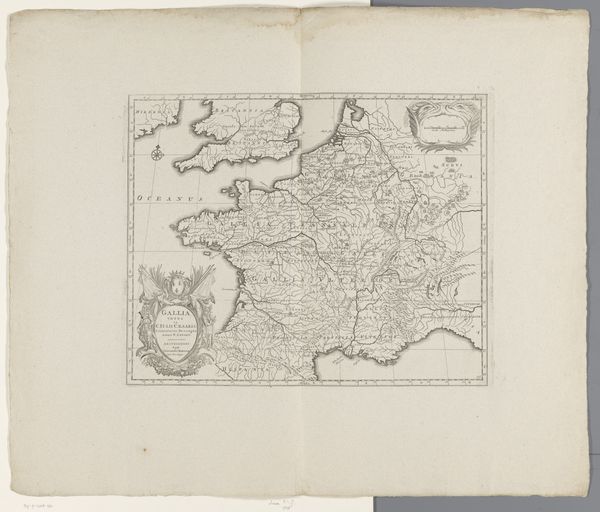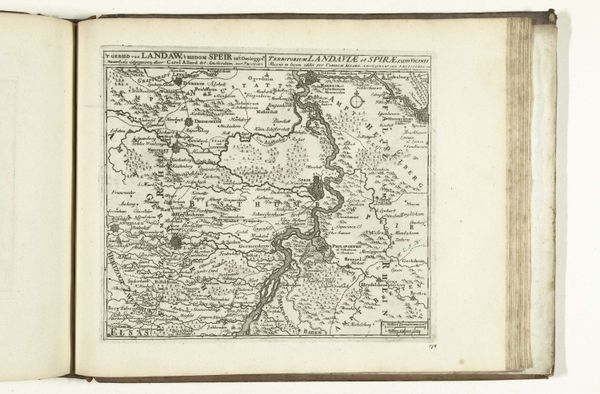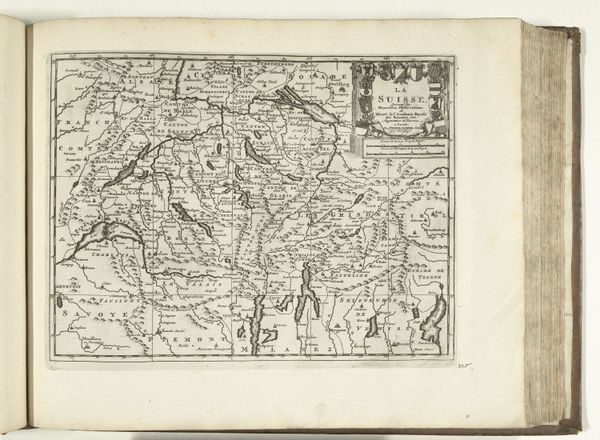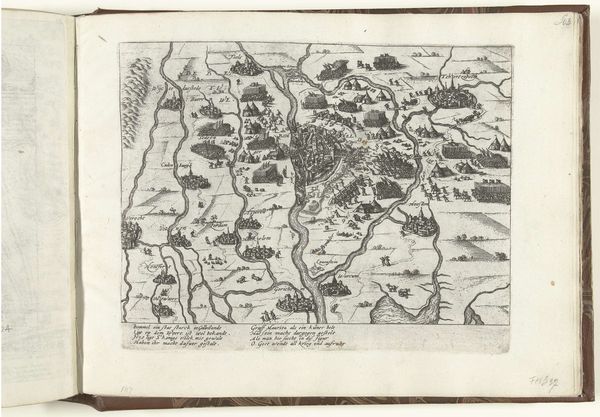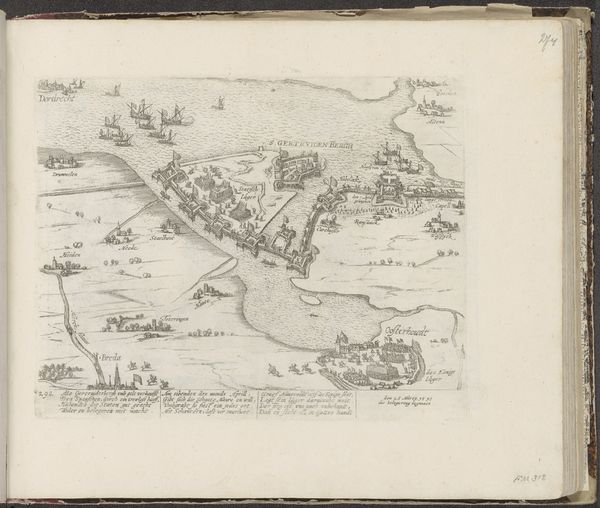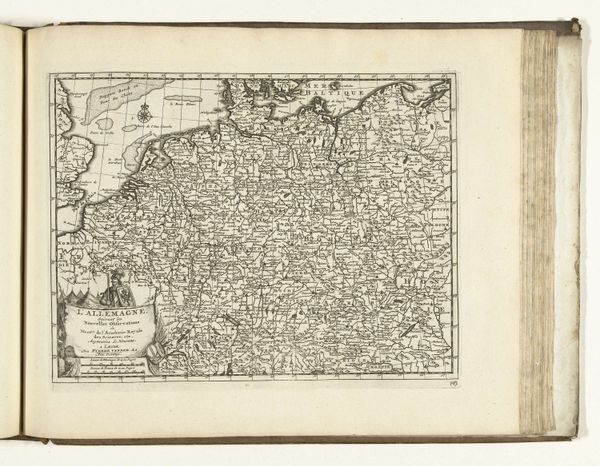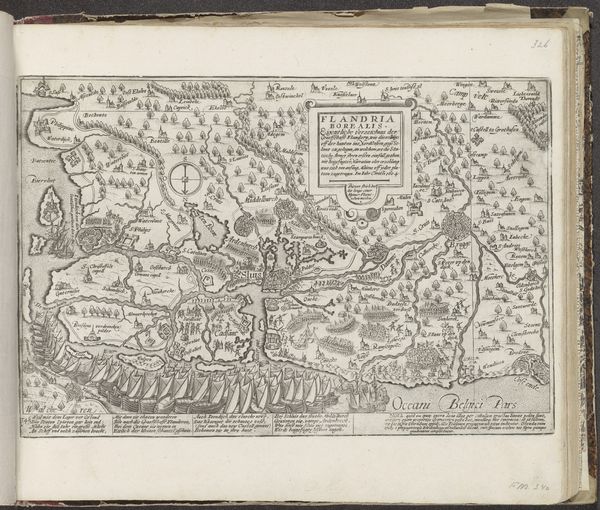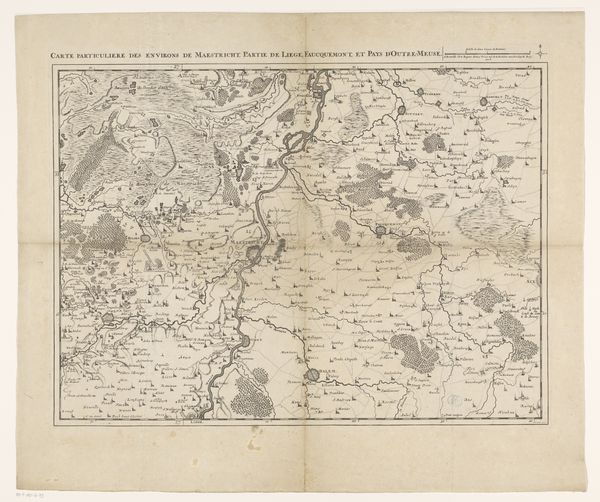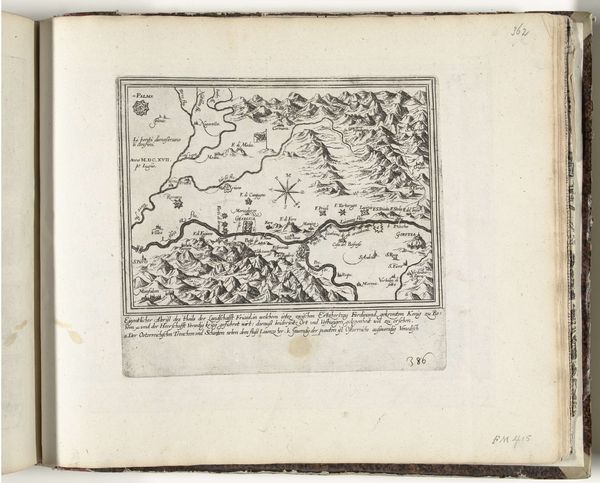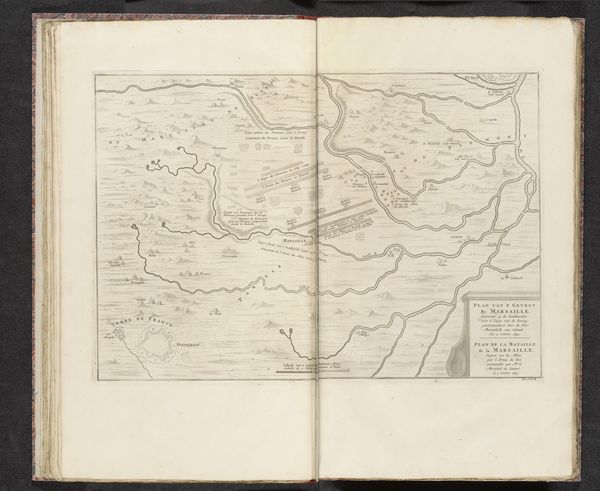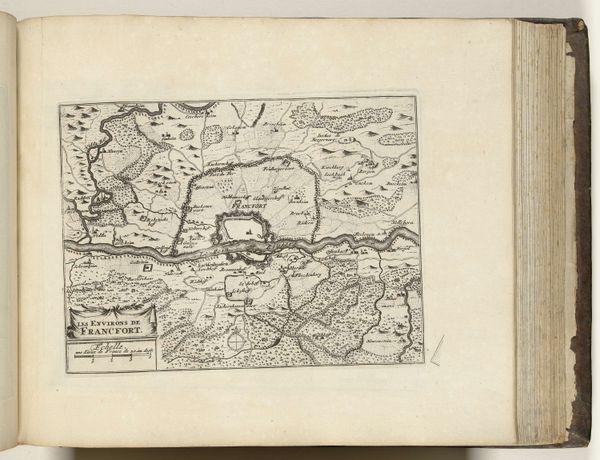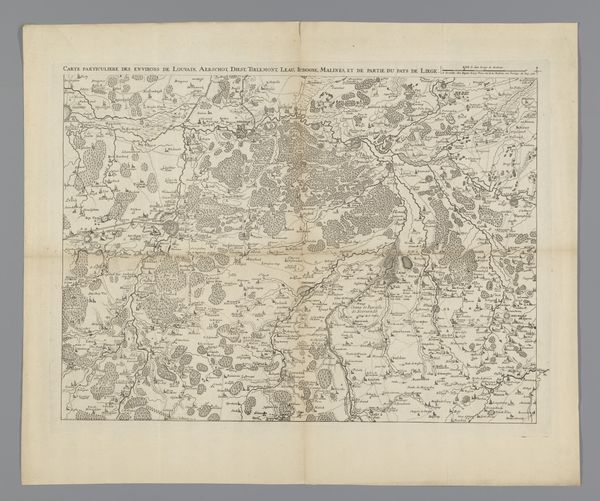
drawing, graphic-art, print, ink, engraving
#
drawing
#
graphic-art
#
medieval
#
baroque
# print
#
landscape
#
ink
#
cityscape
#
engraving
Dimensions: height 220 mm, width 284 mm
Copyright: Rijks Museum: Open Domain
Curator: The graphic work before us, held in the Rijksmuseum's collection, is a "Kaart van Parijs en omgeving, 1590," or "Map of Paris and surroundings, 1590," attributed to Frans Hogenberg. It's an ink engraving on paper, dating sometime between 1590 and 1612. Editor: My first impression is that it's incredibly detailed for the period; there's such care in representing each tiny building, and yet a sort of emotional distance as if this precision seeks objectivity amidst an unspoken chaos. The dark ink on aged paper feels quite somber to me. Curator: I see what you mean. The somber feel might speak to the turbulent times of the late 16th century. Maps weren't just geographical tools then. The symbol-laden rendering shows the social and political landscapes of Paris; these shapes trigger visual and cultural memory around civic pride and class divisions. Editor: Precisely! And this depiction, created during a period of immense religious conflict in France, isn't politically neutral. Look at the strategic placement of key structures in relation to each other. The engraving’s medium is not incidental: reproducing these images democratized information and aided navigation, of course, but they also implicitly justified territorial and political claims, framing the urban spaces and natural boundaries within larger intersectional power dynamics that are both nationalistic and local. Curator: It's interesting how the grid-like organization of Paris—the ordered sprawl beyond its circular center—suggests both control and possibility. I find this plan view to recall symbolic mandalas which organize elements of the city and orient inhabitants toward their purpose and history. There is an inherent psychological pull, especially considering the Baroque embellishments. Editor: I'm less convinced by the mandala connection. What I read here are clear demarcations: who holds power and how that power extends, visibly. Remember the cartographer's intent; these cityscapes justified economic claims or colonial reach across different groups in their period of production. Consider the impact it had on viewers when it first came into being versus now. Curator: Of course. Though perspectives might diverge on particular meanings, hopefully visitors are encouraged to unpack for themselves the enduring symbolism woven within. Editor: Indeed. Approaching such historical art critically allows us to connect the past to the ongoing struggles shaping our world today.
Comments
No comments
Be the first to comment and join the conversation on the ultimate creative platform.
